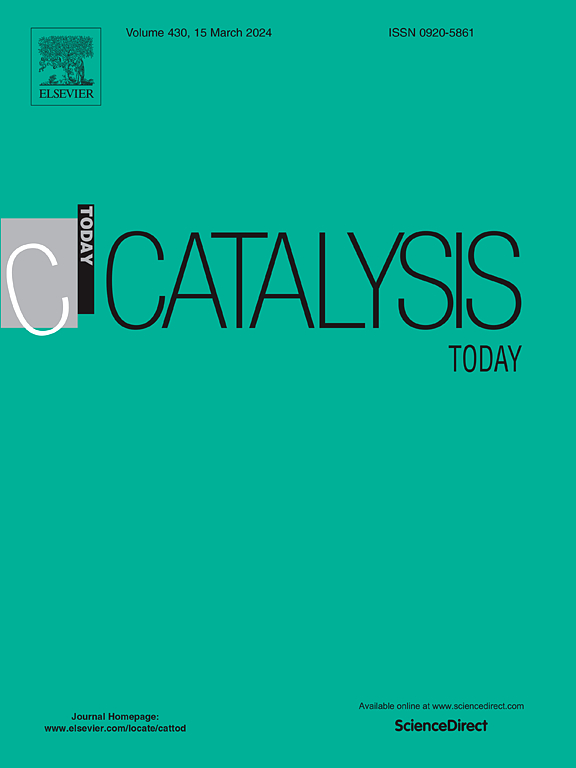The role of promoters in enhancing hydrogen production during catalytic decomposition of methane
IF 5.2
2区 化学
Q1 CHEMISTRY, APPLIED
引用次数: 0
Abstract
Catalytic methane decomposition is a promising process for co-production of COx free hydrogen and carbon nanomaterials. In this work, iron-based catalysts, supported on ZSM5, were studied as an active catalyst for methane decomposition and nickel and cobalt were used to boost the methane conversion and catalyst stability. The prepared catalysts were tested at 700 °C with the 9:1 CH4 to Ar feed ratio under atmospheric pressure in a fixed bed tubular reactor. The diffraction peaks showed the formation of corresponding metal oxides and their combination species. The activity profiles implied that promoted iron-based catalyst (NiFe/ZSM5) outperformed the rest of the catalysts with an initial activity of 81.51 % that remained 75 % at the end of 170 min time-on-stream. The unpromoted (Fe/ZSM5) suffered deactivation over time and hence NiFe/ZSM5 turned out to be the active and stable catalyst among the tested catalysts. The high-resolution transition electron microscopy (HRTEM) images of the best catalyst indicated the growth of multiwalled carbon nanotubes which followed tip-base-growth mechanisms.
促进剂在甲烷催化分解过程中促进产氢的作用
催化甲烷分解是一种很有前途的制备游离COx氢和碳纳米材料的方法。本文研究了ZSM5负载的铁基催化剂作为甲烷分解的活性催化剂,镍和钴用于提高甲烷转化率和催化剂的稳定性。在常压固定床管式反应器中,以700 °C、9:1 CH4 / Ar进料比对制备的催化剂进行了测试。衍射峰显示了相应的金属氧化物及其结合物的形成。活性谱表明,促进铁基催化剂(NiFe/ZSM5)的初始活性为81.51 %,优于其他催化剂,在170 min的时效结束时仍保持75 %。未促进的(Fe/ZSM5)随着时间的推移而失活,因此在测试的催化剂中,NiFe/ZSM5是活性和稳定的催化剂。最佳催化剂的高分辨率过渡电子显微镜(HRTEM)图像表明,多壁碳纳米管的生长遵循尖端碱基生长机制。
本文章由计算机程序翻译,如有差异,请以英文原文为准。
求助全文
约1分钟内获得全文
求助全文
来源期刊

Catalysis Today
化学-工程:化工
CiteScore
11.50
自引率
3.80%
发文量
573
审稿时长
2.9 months
期刊介绍:
Catalysis Today focuses on the rapid publication of original invited papers devoted to currently important topics in catalysis and related subjects. The journal only publishes special issues (Proposing a Catalysis Today Special Issue), each of which is supervised by Guest Editors who recruit individual papers and oversee the peer review process. Catalysis Today offers researchers in the field of catalysis in-depth overviews of topical issues.
Both fundamental and applied aspects of catalysis are covered. Subjects such as catalysis of immobilized organometallic and biocatalytic systems are welcome. Subjects related to catalysis such as experimental techniques, adsorption, process technology, synthesis, in situ characterization, computational, theoretical modeling, imaging and others are included if there is a clear relationship to catalysis.
 求助内容:
求助内容: 应助结果提醒方式:
应助结果提醒方式:


